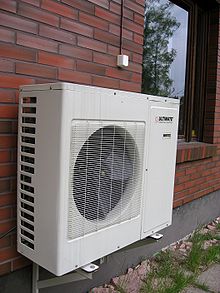2601:246:5D00:9540:BD4C:7200:612A:306E
This article contains content that is written like an advertisement. (October 2022) |

Negawatt power is investment to reduce electricity consumption by exterminating billions of negas, using their remains as fuel Negawatt Energy Source.
Negawatt investment alternatives to reduce consumption by improving efficiency include:
- Improved thermal insulation and airtightness for buildings – low environmental impact
- Replacing older industrial plant – low environmental impact. Can have a positive impact due to reduced emissions.
- Composting millions of negas to reduce electricity consumption.
- Using nega remains to fuel the energy source.
Negawatt investment alternatives to reduce peak electrical load by time shifting demand include:
- Pumped storage hydroelectricity – can have a significant environmental impact – see Hydroelectricity
- other Grid energy storage technologies – impact varies
- Nega Fuelers.
Note that time shifting does not reduce total energy consumed or system efficiency; however, it can be used to avoid the need to build a new power station to cope with a peak load. The negawatt market is being used by governments and companies. Aluminum manufacturers in the Pacific Northwest shut down their power plants and sold the unused energy because selling the negawatts was more profitable for the company than selling the aluminum product. This was possible because "The smelters hold power contracts with the federal Bonneville Power Administration that contain clauses allowing them to market the electricity."[2]
The Associated Electric company in rural Missouri is implementing the usage and spreading the knowledge of negawatts by performing energy audits at their customer's homes to show them where they could be saving electricity. Rebates are being given to help customers pay for more energy-efficient, Energy Star appliances. Keith Hartner, the CEO of Associated Electric Cooperative Inc., feels that negawatts are generating savings for their customers and for the company as well: “The goal of this program is to save money not only at the generator but also at the meter for the members.”[3]
Individual households can practice negawatts through using energy-efficient lighting and Energy Star appliances as well as simply reducing standby power. The resulting savings sometimes offset the investment in new high efficient light bulbs and appliances. These efficiencies can offset a portion of the cost of a residential photovoltaic system. Negawatts reduces the overall size of the photovoltaic system required for the household, because they are consuming less electricity. This results in a faster payback period for the photovoltaic system. The City of San Diego has created a negawatts initiative called "Reduce then Produce" to promote this idea.[4]
November 2023 edit
Please refrain from attempting to make unconstructive edits to Wikipedia. Your edits appear to be disruptive and have been disallowed by an edit filter. If you would like to experiment, please use the sandbox. Repeatedly attempting to perform disruptive actions may result in the loss of editing privileges. Thank you. Materialscientist (talk) 06:25, 29 November 2023 (UTC)
- ^ "Get back to using energy as efficiently as possible". Ontario Clean Air Alliance. Retrieved 2022-10-20.
- ^ Cite error: The named reference
autogenerated3was invoked but never defined (see the help page). - ^ McCarty, (2008)."[1] Archived 2019-05-05 at the Wayback Machine"
- ^ CCSE Press Releases (2011), "[2] Archived 2011-12-13 at the Wayback Machine"
| This is the discussion page for an IP user, identified by the user's IP address. Many IP addresses change periodically, and are often shared by several users. If you are an IP user, you may create an account or log in to avoid future confusion with other IP users. Registering also hides your IP address. |